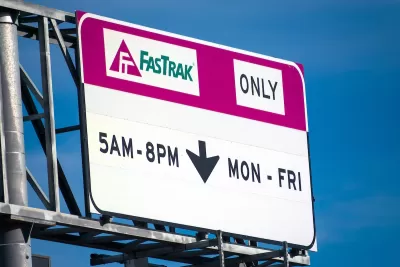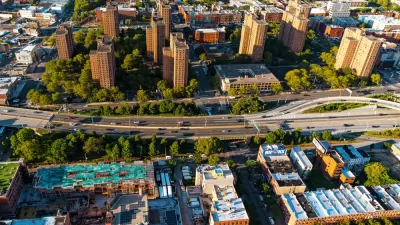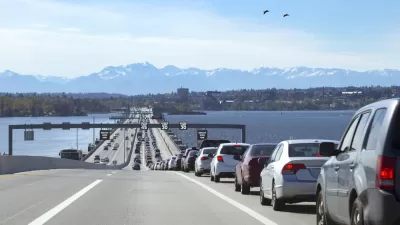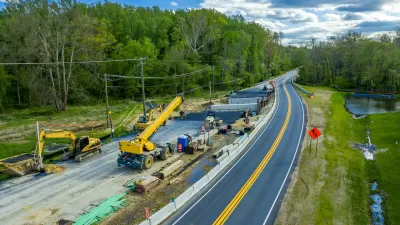Highway 101 was expanded to add express lanes with the promise of reducing congestion for all of the roadway’s users.

Travel time in regular traffic lanes adjacent to a set of new express lanes on Highway 101 in the San Francisco Bay Area is slowing down, according to a report presented to a meeting of San Mateo County cities.
As Michael Cabanatuan explains in the San Francisco Chronicle, drivers on the express lanes travel roughly 11-12 miles per hour faster than drivers in regular lanes. “However, the traffic in the general-use lanes slowed — at some times and in some locations — to less than 30 mph, according to the report. A comparison of reports from the latter half of 2023 versus the first half of 2024 also showed a slight increase in the number of hours in which drivers in the standard lanes experienced slow speeds.”
The state widened the freeway to accommodate the new express lanes, promising faster travel times for everyone using the roadway. “According to the express lanes report, 54% of the cars in the express lanes pay tolls — with 46% paying full toll and 8% paying half — while 41% are carpoolers who claim on their FasTrak toll tags that their vehicle has three or more occupants.”
FULL STORY: New lanes to speed Bay Area traffic may be slowing some drivers down

Planetizen Federal Action Tracker
A weekly monitor of how Trump’s orders and actions are impacting planners and planning in America.

Congressman Proposes Bill to Rename DC Metro “Trump Train”
The Make Autorail Great Again Act would withhold federal funding to the system until the Washington Metropolitan Area Transit Authority (WMATA), rebrands as the Washington Metropolitan Authority for Greater Access (WMAGA).

The Simple Legislative Tool Transforming Vacant Downtowns
In California, Michigan and Georgia, an easy win is bringing dollars — and delight — back to city centers.

In These Cities, Most New Housing is Under 441 Square Feet
With loosened restrictions on “micro-housing,” tiny units now make up as much as 66% of newly constructed housing.

Albuquerque’s Microtransit: A Planner’s Answer to Food Access Gaps
New microtransit vans in Albuquerque aim to close food access gaps by linking low-income areas to grocery stores, cutting travel times by 30 percent and offering planners a scalable model for equity-focused transit.

This City Will Pay You to Meet Your Neighbors
A North Kansas City grant program offers up to $400 for residents to throw neighborhood block parties.
Urban Design for Planners 1: Software Tools
This six-course series explores essential urban design concepts using open source software and equips planners with the tools they need to participate fully in the urban design process.
Planning for Universal Design
Learn the tools for implementing Universal Design in planning regulations.
Smith Gee Studio
City of Charlotte
City of Camden Redevelopment Agency
City of Astoria
Transportation Research & Education Center (TREC) at Portland State University
US High Speed Rail Association
City of Camden Redevelopment Agency
Municipality of Princeton (NJ)





























